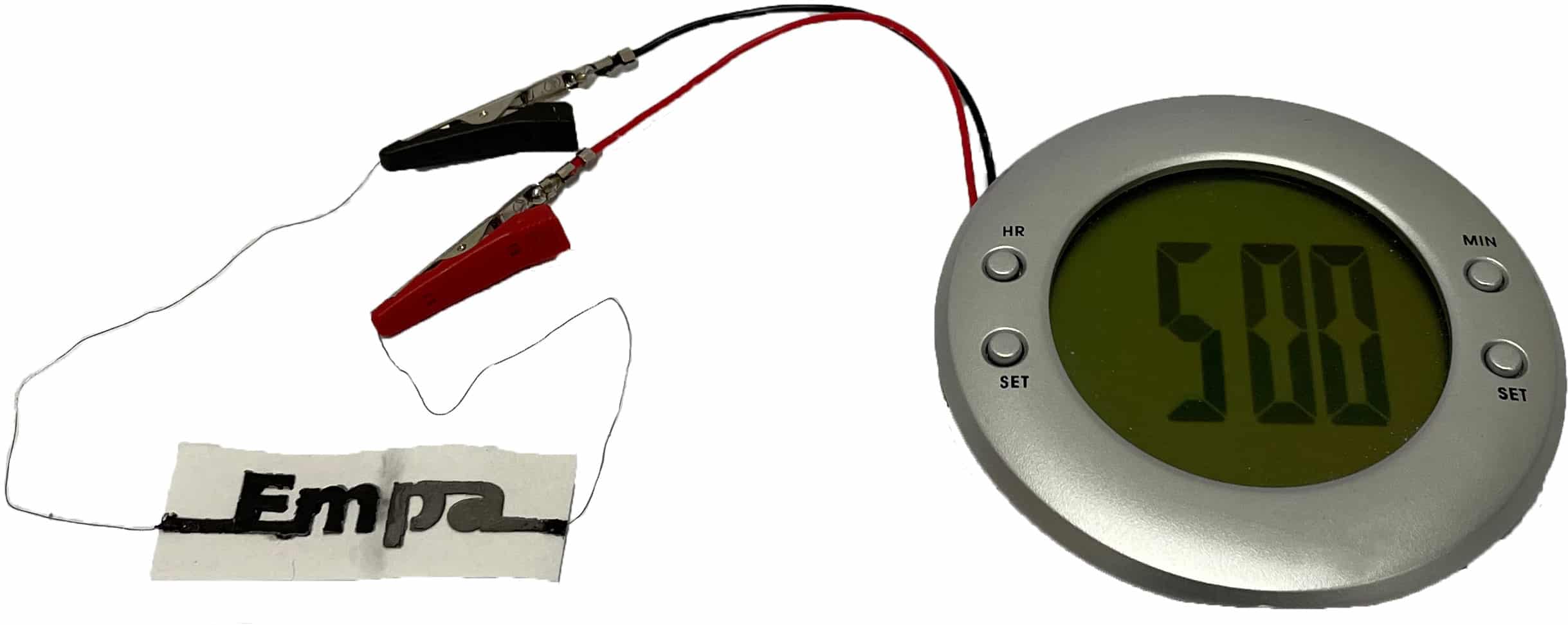Less e-waste: Researchers demonstrate batteries made from paper, ink, salt and water

What to do against the large amount of electronic waste? Researchers at the Swiss Federal Laboratories for Materials Testing and Research, Empa for short, have a promising one, at least for disposable batteries proposed solution. Using a water-activated paper battery, they powered an alarm clock with an LCD display. It took 20 seconds for the batteries to activate. It then delivered a stable voltage of 1.2 volts for an hour. For comparison: an ordinary AA battery supplies 1.5 volts.
The team led by Empa researcher Gustav Nyström relies on at least one electrochemical cell, around one square centimeter in size, for its batteries. Three different inks are printed on a rectangular strip of paper. Salt, in turn, is found throughout the paper strip. The researchers also dip one of the two shorter ends of the strip in wax.
“On one side of the paper is printed an ink that contains graphite flakes and acts as the positive terminal of the battery – the cathode; on the back is printed a second ink that contains zinc powder and acts as the negative terminal of the battery – as the anode. A third ink, containing graphite flakes and soot, is printed on both sides of the paper over the other two inks, forming the current collectors that connect the two terminals of the battery with two wires located at the wax-dipped end of the paper strip. “
Also interesting: Over 1,200 kilometers: Tesla should last a particularly long time with the “Gemini battery”.
If you now add a small amount of water, the salt contained in the paper dissolves and the electrolyte becomes ionically conductive. This activation process distributes the ions in the paper, causing the zinc at the anode to oxidize and electrons to be released. When the external circuit is closed, these electrons flow from the zinc-containing anode via the graphite and carbon black ink via the wires to the graphite cathode, “where they are transferred to the oxygen in the ambient air and thereby reduce it.” These two “redox reactions” (a reduction and an oxidation) produce an electric current that can be used to operate an electrical device.
Paper battery: Reactivated after adding more water
The connection of an alarm clock with LCD display described above served as a “proof of concept”. To do this, the researchers use a battery with two of their paper cells. Here it was shown that the performance of the battery decreased significantly after one hour. However, the battery could be reactivated by adding two more drops of water. As a result, it maintained a stable operating voltage of 0.5 volts for more than an hour.
Because paper, zinc and the other components are biodegradable, the environmental impact of the battery is said to be significantly lower than that of conventional models. “And unlike many metal-air batteries, which use a metal foil that gradually depletes as the battery is used, with our design, we only put just the amount of zinc in the ink needed for the respective application is actually needed,” explains Dr. Gustav Nystrom.
Nystrom points out that the time that the battery remains wet and therefore functional is definitely a weak point. However, the researcher is confident of being able to solve this problem with a different structure. This drying out is not an issue in environments with high humidity, as can be found in environmental sensors.
A few optimizations are certainly needed for everyday use. Comparable batteries are already being used in healthcare and environmental protection, for example as Disposable Biosensors. It would also be conceivable to use it, for example, to determine your blood sugar level. Head batteries are still used as energy cells in corresponding measuring devices.
Source: Empa
Reference-www.pcgameshardware.de